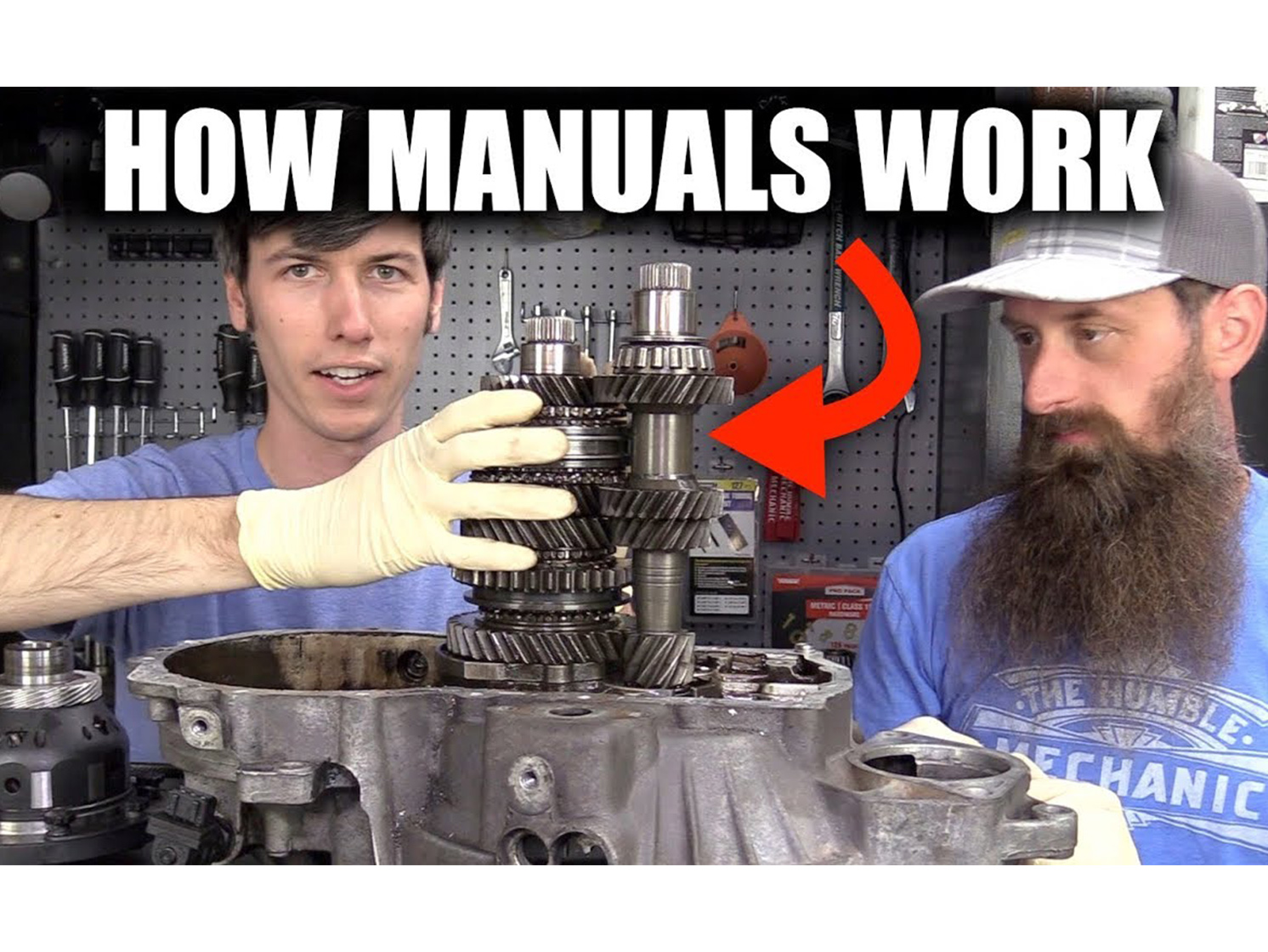How a manual transmission works, made simple
Let’s face it, transmissions can be confusing. Rather than following a straight path, power produced by the engine must travel through a maze of clutches, fluids, and gears before it can finally make its way to the ground (all of which can be viewed in our Ford-O-Matic Redline Rebuild). However, Jason Fenske of Engineering Explained and Charles Sanville of The Humble Mechanic recently provided a detailed hands-on demonstration of how a manual transmission sends power to the wheels.
The pair start by explaining the purpose of the transmission, in that it functions as a trade-off between wheel torque and wheel speed. Lower gears provide high levels of torque multiplication needed to get the vehicle moving, while higher gears offer greater top speed capability. Fenske then brings out his trademark whiteboard to dive into the mathematical details on how this works in practice.
The critical parts of the manual gearbox come next. Sanville and Fenske show off the clutch assembly and functionality before turning their attention to the gearbox itself. And it’s along the input and output shafts where the magic truly happens. Sliding collars lock certain gears in place while allowing others to rotate freely. These differing ratios allow for the input and output shafts to rotate at different rates, thereby allowing the car to travel at higher and lower speeds.
I’ll let the two cover the nitty-gritty details of meshing cogs, as well as the mind-blowingly simple solution for driving in reverse. Oh, and be sure to stick around until the end and watch the bloopers.


